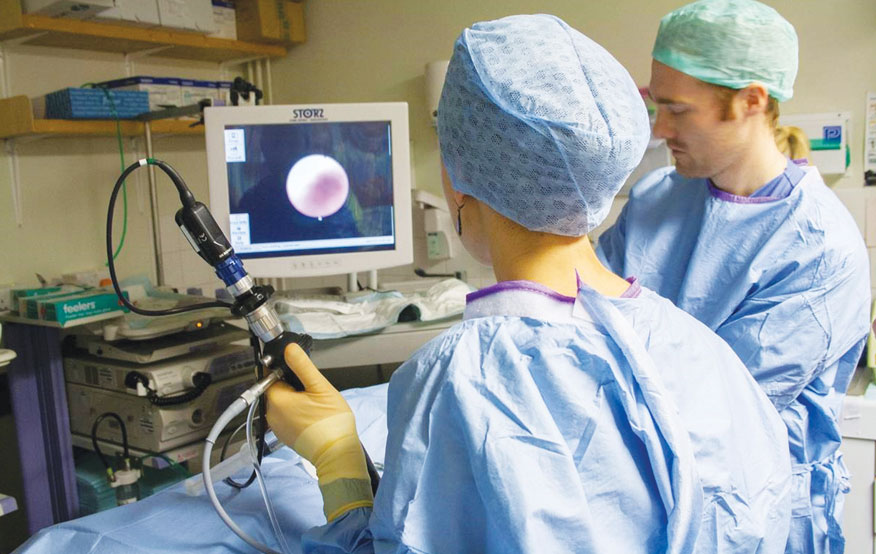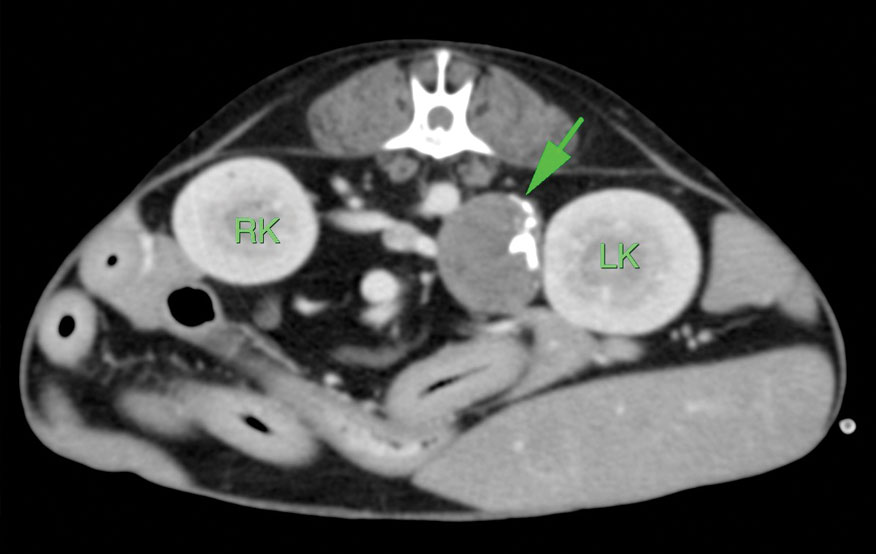The Most Common Cases Referred to Internal Medicine
Clinical Connections – Spring 2017
We are focusing, over a number of articles, on the most common cases referred to the RVC team and the capacities that enable us to offer effective treatments to patients and a good service to referrers.
Introduction
Though each clinical service is composed of people with advanced qualifications in their respective fields, the different services work together on many cases. This transdisciplinary approach ensures each patient gets the very best treatment available, whatever condition or conditions they present with.
For example, cases referred to the Internal Medicine Service frequently have input from other clinical teams and support cases referred to other teams. The internal medicine team is the largest internist team in Europe and the breadth of expertise allows it to offer sub-speciality expertise to all referred patients.

Each animal under the care of the Internal Medicine Service is discussed in great detail during medical rounds held by the entire team. This means that each pet is effectively being treated by the whole team, the philosophy being several heads are better than one. All referred patients benefit from the caring attitude of the vets and veterinary nurses, as well as the latest understanding of disease processes and advanced treatments.
Among the most common reasons for canine referrals to the Internal Medicine Service are chronic diarrhoea, vomiting, anaemia, diabetes, respiratory problems and pyrexia. For cats, some of the most common reasons for referral are inappetence and anorexia, weight loss, renal disease, hepatobiliary disease, respiratory problems and urolithiasis.
The team specialises in helping out in all those cases where the true cause of the pet’s illness remains elusive, where multiple illnesses join together in a toxic mix causing a confusing or conflicting image, or when mainstream treatment options do not offer the solution one was hoping for.
The development of our minimally invasive intervention options has resulted in an increase in cases being referred for lithotripsy and minimally invasive uroscopy-guided cystotomy and laparoscopic organ biopsies.
The team’s ever-increasing scope and skills in endoscopy have enabled gastrointestinal and respiratory endoscopy to offer diagnostic as well as therapeutic solutions for the smallest of cats and largest of dogs. The team has also further built on its credentials in dealing with immune-mediated diseases, such as immune-mediated haemolytic anaemia, pyrexia of unknown origin, polyarthritis and meningitis.
In recent years the RVC has formalised this with the inception of the immune-mediated disease clinic, offering the latest of immune system tests and focused expertise in a range of old and new immunomodulatory drugs. As you will know, there is more than steroids, azathioprine and cyclosporin that can help a pet.
Commenting on specific clinics within the Internal Medicine Service and how they help referred patients, co-head of the team Stijn Niessen said: “The Internal Medicine Service’s dedicated endocrine clinics further compliment the range of sub-specialty service provided. The diabetic remission clinic supports you to provide best-practice treatment of all diabetic cats and dogs and includes the possibility of using non-invasive continuous glucose monitoring and entry into world-leading clinical trials.
“The hypophysectomy clinic, which works closely, the Veterinary Neurology and Neurosurgery Service, treats all pets with a pituitary tumour, with an aim to cure. The complicated Cushing’s clinic can help your patients when the trilostane just does not do the trick or when concurrent disease muddies the waters. The radioactive iodine clinic now sees more cats than ever in its history. This has shortened the waiting list to a mere couple of weeks for most cases.”
The diagnostic imaging expertise and advanced imaging facilities are of great value to all of the clinical teams at the RVC, not least the Internal Medicine Service. Commenting on the role of the value of the Diagnostic Imaging Service for such cases, head of service Randi Drees said: “Diagnostic imaging is routinely used by all clinical services at the Queen Mother Hospital for Animals. Computed tomography (CT) examinations are especially helpful in evaluating the whole body and are heavily utilised by the Internal Medicine Service.
“The detailed information about anatomy provided by CT examination is especially helpful in larger patients. Common diagnoses made include airway disease such as pneumonia, liver disease, urinary or gastrointestinal disease, and the search for possible neoplasia.”

Internal Medicine Service referrals
Cat Top 10
- Inappetence / anorexia
- Weight loss
- Renal disease
- Hepatobiliary disease
- Respiratory problems
- Urolithiasis
- Pyrexia
- Anaemia
- Gastro-intestinal disease
- Pancreatic disease
Dog Top 10
- Chronic diarrhoea
- Vomiting
- Anaemia
- Diabetes
- Other hormonal disease
- Respiratory problems
- Pyrexia
- Polyuria/ polydipsia
- Renal disease
- Urolithiasis
Case Study 1
The internal medicine team was presented with an eight-year-old Bichon Frise, Eddie, with uncontrolled diabetes mellitus.
Whenever the local veterinary surgeon increased the insulin on the basis of a glucose curve, hypoglycaemic events would occur. However, at the current insulin dose the dog remained clinical, showing polyuria and polydipsia.
After discussing Eddie’s problems during the daily internal medicine rounds, our group of specialists decided to employ a continuous interstitial glucose monitor to evaluate Eddie’s glucose fluctuations more carefully and over a longer period of time. Analysis of the data acquired revealed that Eddie in fact was suffering from a short duration of action of his insulin.
The endocrinology experts within the internal medicine team then took the unusual step to put Eddie on a lower insulin dose, but this time to be given three times daily, instead of twice daily. Two weeks later the owner reported a huge improvement in clinical signs and resolution of hypoglycaemic events.
The technology employed is usually only employed in humans with diabetes, though the RVC team regularly uses these gadgets in both dogs and cats. This prevents the need for regular blood sampling, since the blood glucose readings are being conducted by a tiny plastic probe which sits under the skin for the duration of the measurement period. Values are being sent telemetrically to a capture device. The vast majority of pets do not even notice the little plaster that hides the tiny probe.
Case Study 2
Tiger, a five-year-old male neutered domestic short-hair cat, was presented to the internal medicine team for acute onset inappetance, renal disease and visualisation of a big and small kidney on ultrasound at the local veterinary practice.
A specialist abdominal ultrasound, followed by a contrast-enhanced Computed Tomography, identified Tiger to be suffering from a ureteric obstruction caused by a stone.
After a thorough discussion between the RVC’s internal medicine team and the soft tissue surgery team, placement of a subcutaneous ureteric bypass (SUB) system was offered to the owners. Using this recent technology, urine flow was re-directed from the renal pelvis past the obstructed ureter straight into the bladder.
Tiger regained his appetite and a medical plan was constructed to try and prevent further urinary stone formation. The SUB device is a unique system designed for use in dogs and cats, to bypass a ureteral obstruction when traditional surgery or interventional techniques are contraindicated. The RVC is one of the first places in the UK and the world to routinely place SUB-systems, which forms part of a range of other unique nephro-urology services provided by the internal medicine team, which includes cystoscopy, minimally invasive cystoscopy-guided cystotomy (working together with the Soft Tissue Surgery Service) and laser lithotripsy.
Sign up to get Clinical Connections in your inbox rvc.ac.uk/clinical-connections
